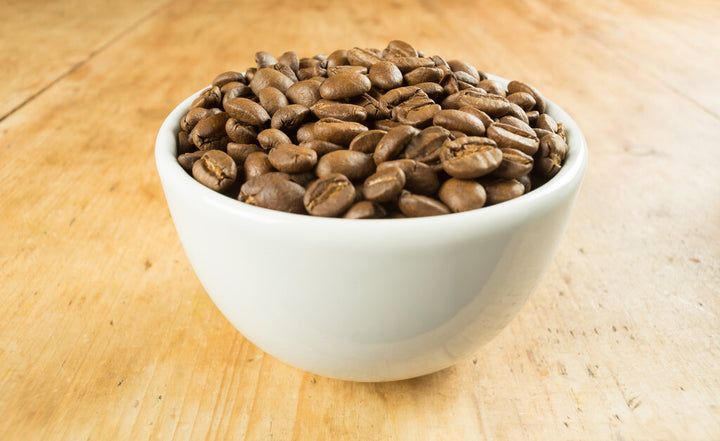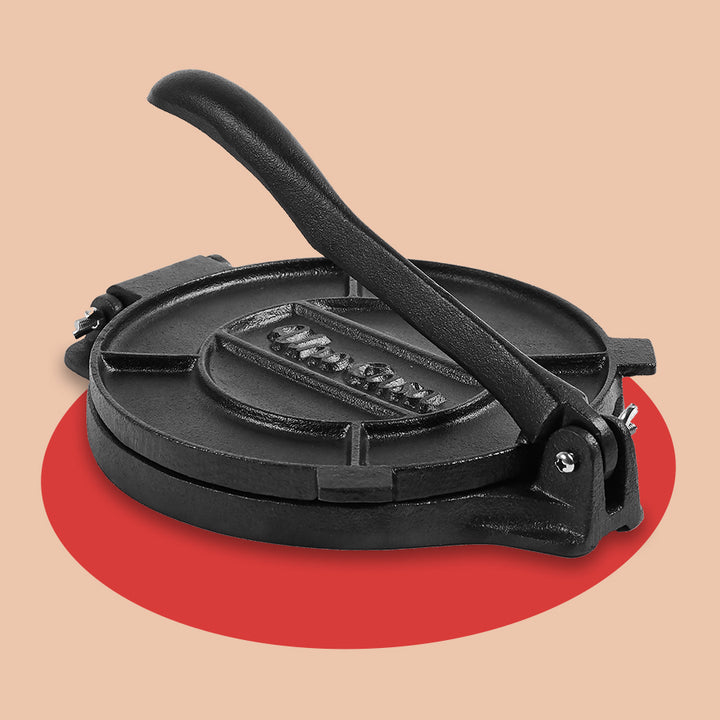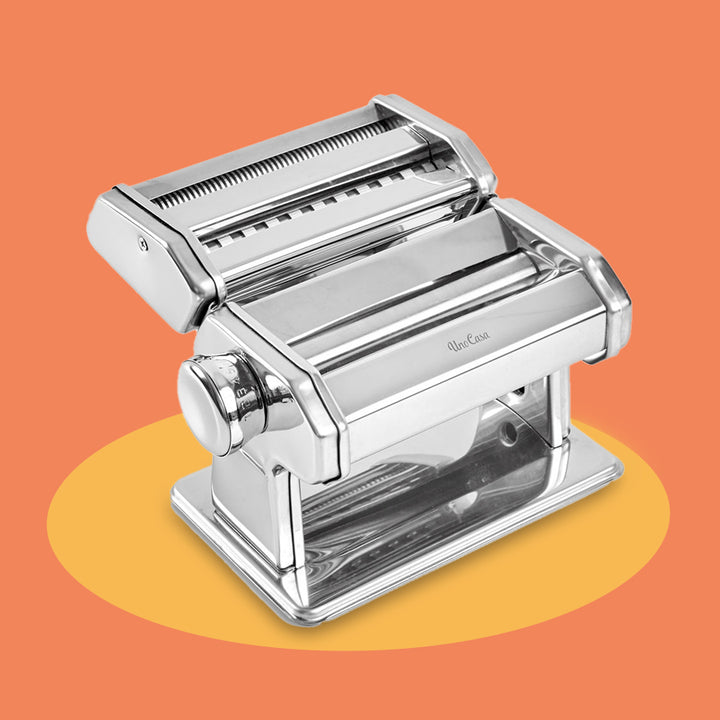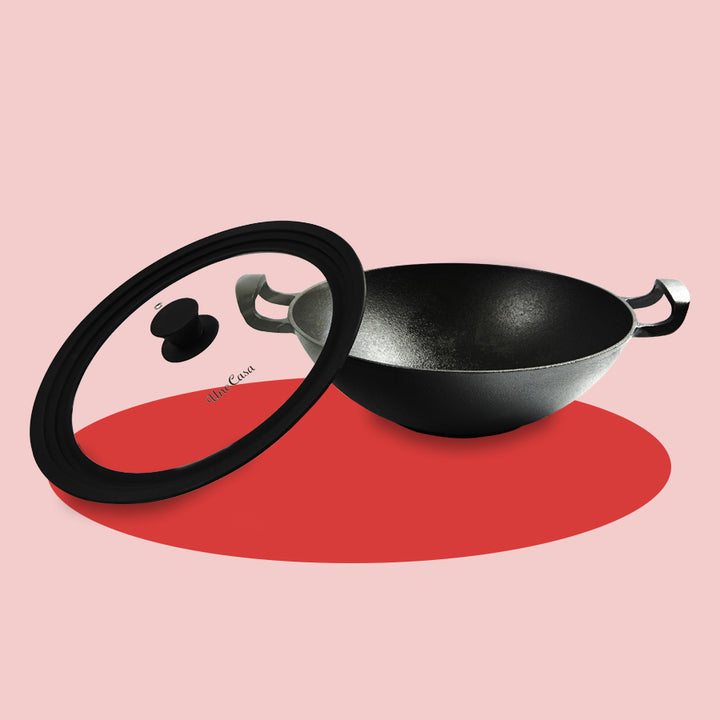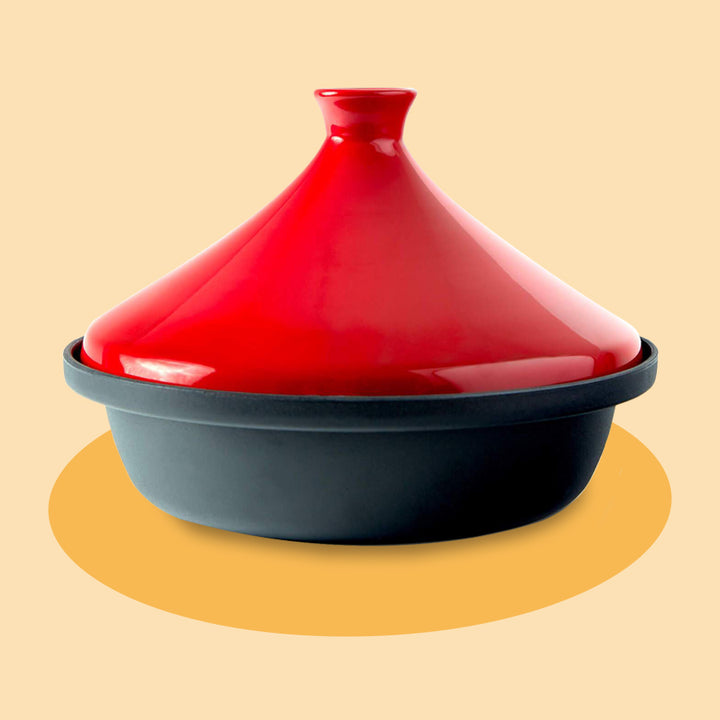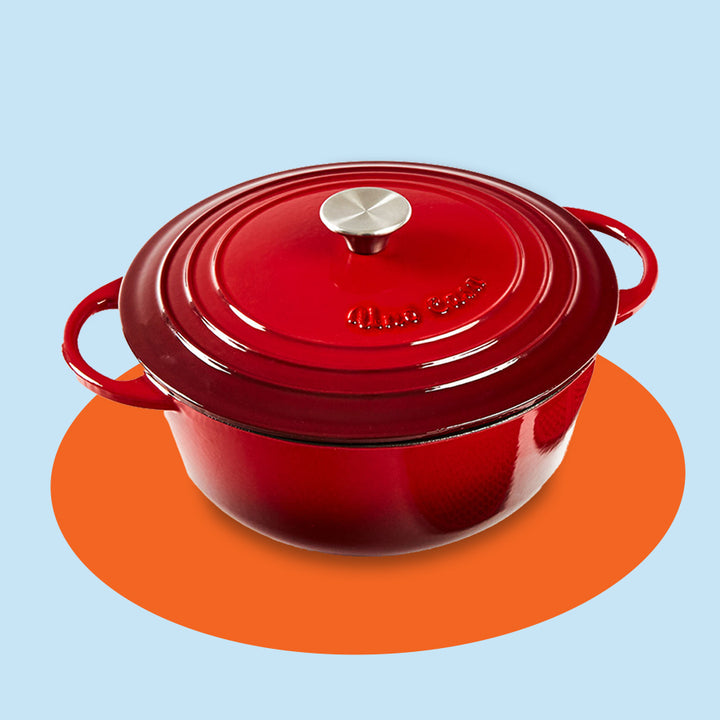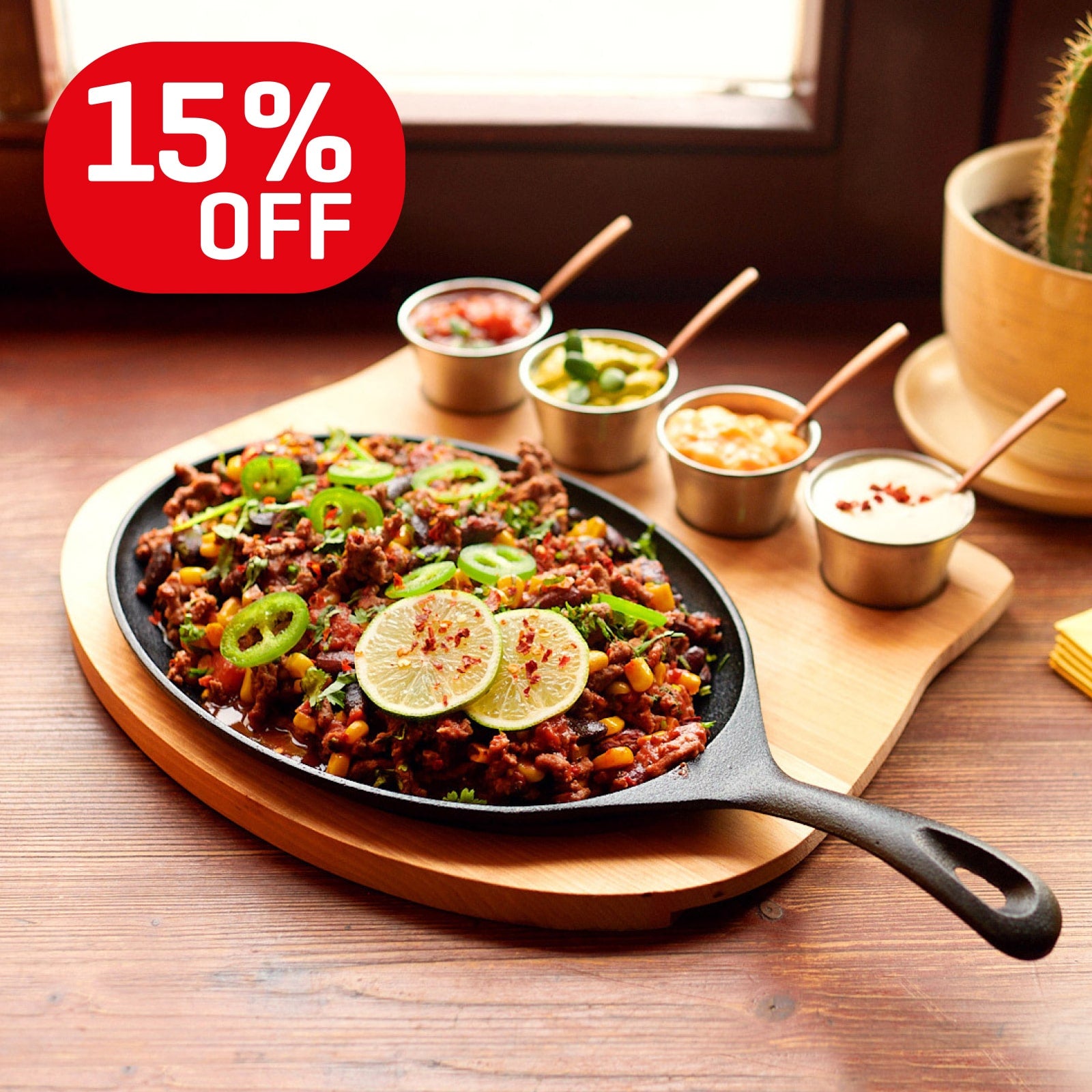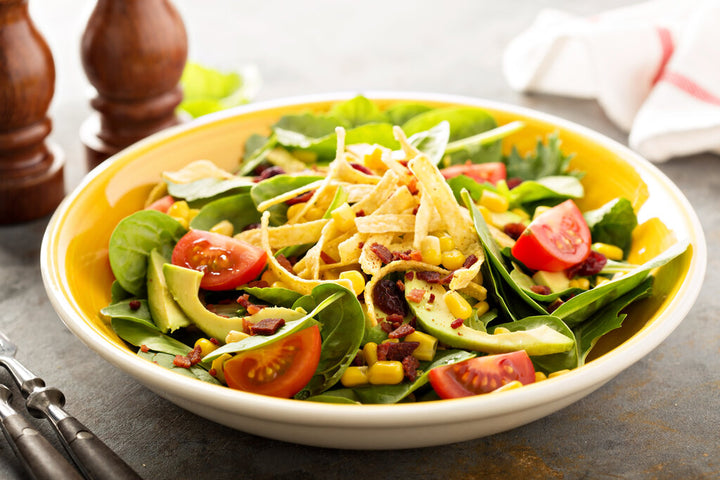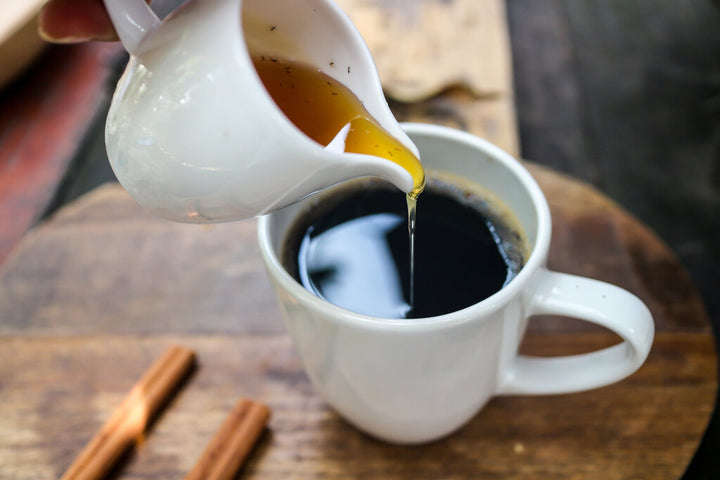How to Clean Cast-Iron Griddle Without Losing Your Seasoning!

A cast-iron griddle makes such a valuable, essential kitchen tool that you'll want to leave it on your stovetop permanently - and you should! This solid investment can last you a few lifetimes if cared for properly - read our essential guide below to learn how to clean griddle pans the right (and easy!) way.
Why do we clean cast-iron differently?
Cast-iron cookware needs a slightly different treatment than stainless steel, aluminum, copper, or non-stick coated pots and pans.
That's because cast-iron in its raw form is quite porous and sensitive to excess moisture, which can cause rusting.
Our cast-iron pots, pans, and griddles require seasoning - we let thin layers of oil cook on the surface of cast-iron, and at high heats, these oils break down, oxidize, and polymerize into a hard, plastic-like coating around our pans. This seasoning helps protect the pan against moisture and offers some natural, non-stick qualities to the user.
Don't let its 'weakness' discourage you, as cooking on iron pieces like a stovetop cast-iron griddle is entirely worth it. If treated well, a cast-iron cookware piece can last for several lifetimes, well over 100 years. You can use your cast-iron throughout your life and gift it down to your children to do the same - one piece might even make it all the way to your grandkids, too!
Non-stick coated pots and pans definitely cannot claim the same, and as their coating starts scratching after a year or two of regular pan use, they can leach harmful chemicals into your food.
Once you learn how to clean a cast iron griddle, the simple way, you'll want to use it for everything, because it's easy and gives great results, searing meats and other foods like no other.
How To Clean Cast-Iron Stovetop Grill Pans
The cast iron griddle cleaning process is a little different than cleaning other cookware, but contrary to popular belief, it's not very difficult at all! Read below for our step-by-step instructions to cast-iron griddle care - once you learn the basics, you'll be doing this cleaning routine with your eyes closed.
Better To Clean Sooner Than Later
One word to the wise - when it comes to cleaning cast-iron griddles, trying cleaning it while it's still warm. You can, of course, wait and clean it later, but the food on your cast-iron flat griddle will come off much easier if you remove it before it hardens to the pan.
Step #1: Wash your Cast-Iron Griddle.
Though cast-iron tends to hate moisture, the best way to clean a griddle is with water, which it can handle in small doses.
Place your griddle in a sink full of warm, soapy water. Stick to mild dish soap, as you don't want to use any cleaner that's too abrasive.
Cleaning the cast-iron griddle should be reasonably easy if your seasoning is well-built, as the food should come right off. If your pan has a 'younger' seasoning or cooked something especially sticky, like eggs, you may have to give it a bit of elbow grease.
Use a non-metal and non-abrasive scrub pad is the best way to clean cast-iron grill pan surfaces without damaging the seasoning.
Step #2: Scrub Any Extra Stuck Food.
If you can't remove cooked-on food with a non-abrasive scrubber, try cleaning cast-iron grill pan surfaces with a salt scrub.
Remove the griddle from the sink and place it on the counter. Place some coarse kosher salt in the pan and add extra water as needed to make a paste. Use the salt scrub for cleaning cast-iron griddle surfaces by scrubbing the paste over stuck-on foods until they come loose.
Rinse the griddle well when finished.
Step #3: Dry your Cast-Iron Griddle.
Once thoroughly rinsed, you can dry your griddle with a cloth to remove most of the excess moisture, but it's not over yet!
Place your griddle on the stovetop and then turn the burners on to low heat. Let the water evaporate for 5 minutes as it warms. When it's fully dry, turn off the heat and let the griddle cool on the stovetop.
Step #4: Lightly Oil your Griddle.
When you've finished all the steps of cast-iron grill cleaning properly, there's still one essential thing to do before you put your pan away. Use a paper towel to apply a light layer of cooking oil to the pan's surface.
Remove any excess as needed using a clean paper towel, then put your pan in a cupboard away from moisture.
The oil coating will protect your pan as it sits in your kitchen, awaiting its next use rust-free!
How to Remove Rust from a Cast-Iron Griddle
Even with the best care, sometimes cooking on cast-iron griddle surfaces can lead to a bit of rust over time. Treat the griddle rust as soon as you can before any patches become more extensive and harder to fix.
A salt scrub, as described above, should generally be enough to remove small spots of rust.
For more severe forms of rust, use steel wool or an abrasive scrubbing pad - you're going to need to repeat the process of seasoning your cast-iron griddle from scratch, but first, all of the rust needs to be completely gone!
Do a complete seasoning process on your griddle if you removed most of the seasoning in the rust-removal process.
For more minor cases, try one of the two options below to reseason gently.
Stove Top Rust Repair
Heat your griddle over medium-high heat, then dip some clean paper towels in 2 tablespoons of cooking oil. Hold the oiled paper towels with tongs and wipe the griddle's surface until the oil smokes, then let cool slightly. Repeat 3-5 times.
Oven Rust Repair
Heat your oven to 500°F. Use clean paper towels to rub 1-2 tablespoons of oil over the griddle's surface. Wipe any excess, then place the griddle in the oven to bake for 1 hour. Turn off the oven and leave the griddle in there to cool completely.
General Care Tips for Cast-Iron Griddles
- Don't leave your griddle to soak in the sink - place it in the sink, clean it, and get it out of the water ASAP to avoid rusting.
- Don't wash your pan right after you take it off the oven, as the difference in temperatures between the scorching hot pan and the much less hot sink water can cause thermal shock and make your pan crack or warp.
- Thermal shock can also happen if you try to heat your pan too quickly, so always place your pan on the oven when it's off, and turn the burners on to allow the pan to heat up at the same speed as the burners.
- Wipe away extra oil when seasoning to avoid building a sticky coating.
- Keep your oven hot as you re-season the pan so the oil can better bond to the cast-iron surface.
Final Notes: Testing Your Griddle's Seasoning
Now that you know how to clean cast-iron properly, it's still essential to keep an eye on your griddle's seasoning, as it will have some natural wear and tear over time.
A well-seasoned griddle is dark and semi-glossy on the surface. Check your griddle periodically for dull, dry spots or signs of rust. If your griddle is greasy or sticky to the touch, the pan may need reseasoning.
If you suspect your pan isn't performing at its best, try the fried egg test - fry an egg in the skillet with one tablespoon of cooking oil and see how it does. If it sticks badly to the pan, it's reseasoning time.
We hope you have many happy years ahead, cooking on your well-seasoned griddle pan!
Enjoyed these tips? Check out our other articles about how to use a griddle properly or find some inspiration on what you can cook on a griddle.
Leave a comment
Comments will be approved before showing up.
Also in Tips
